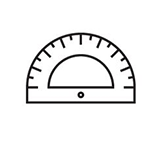원시 고슴도치화석(Erinaceomorpha Replica)-20121025-2 
판매가 300000
할인판매가 300,000원 총 할인금액 원 (모바일할인금액 원)
적립금
- 0원(0%)
-
원 %
-
원 %
-
원 %
-
 원 %
원 %
-
원 %
-
원 %
-
원 %
-
원 %
| 국내/해외배송 | |
|---|---|
| 배송비 방법 | 택배 |
| 배송비 | 4,000원 (50,000원 이상 구매 시 무료) |
| 수량 |
|
| 상품 정보 | 가격 | 삭제 |
|---|---|---|
| [총 상품금액(수량)] 0 (0개) | ||
일반명 : 원시 고슴도치화석(Erinaceomorpha Replica)
학 명 : Pholidocercus hassiacus
지질시대(Age) : 신생대 중기 에오세(Middle Eocene, About 47 My)
원산지(Locality) : Messel Pit, Darmstadt Germany
크 기 : Slate 34x24 cm
Scientific classification
동물계(Kingdom: Animalia)
척삭동물문(Phylum: Chordata)
척추동물아문(Subphylum: Vertebrata)
포유강(Class: Mammalia)
고슴도치목(Order: Erinaceomorpha)
임파머과(Family: Amphilemuridae)
Genus: Pholidocercus
폴리도세루쿠스(Pholidocercus)는 멸종된 육상에서 활동하던 식충동물로 오늘날의 고슴도치목과 연관성이 있다. 고슴도치와 유사하게 등쪽으로 가시나 가시 같은 털이 나있으나 긴 꼬리가 있는 점은 다른점이다. 네발 모두 또한 평편한 비늘로 덮여있었다. 행동양식이 현존의 고슴도치과와 비슷한지는 자세히 알려진 바 없으나 수풀지역의 땅에서 먹이를 찾는 잡식성으로 여겨지고 있다.
Observations: Pholidocercus hassiacus was an extinct terrestrial insectivore related to the hedgehogs. Like these, it had a back covered by spines or spine-like hair. Unlike hedgehogs, indeed Pholidocercus had a long tail covered with small scales, similar to that of reptiles. It also had a curious plate of scales (of the same kind of its tail) on its front. We do not know whether this feature was related to the behaviour of the animal or else. Like its modern relatives, Pholidocercus was an omnivore mammal looking its food on the ground of the forest.
폴리도세루쿠스(Pholidocercus)는 Pholidocercus hassiacus가 단일종으로 현대의 고슴도치를 닮은 멸종된 속이다. 고슴도치처럼 피부는 뽀족한 침으로 덮여있다.
고슴도치는 현종과는 달리 머리에 헬멧 같은 것이 있고 비늘을 가지고 있으며 긴고 두꺼운 비늘이 있는 꼬리를 가지고 있다. P. hassiacus는 메셀의 에오세층에서 유일하게 발견되었다.
Pholidocercus is an extinct monotypic genus of mammal related to and resembling the modern-day hedgehog with a single species Pholidocercus hassiacus. Like the hedgehog, it was covered in thin spines. Unlike hedgehogs, it had scales on its head in a helmet-like formation, and had a long, thick, scaled tail. P. hassiacus has been found in the Messel Pit.
[참고]
1875년경 고생물학자 루돌프 루트비히는 처음으로 악어화석 일부를 발견한다. 덕분에 많은 학자들에 의해 다양한 표본들이 발견되지만 화석이 발견되는 층의 암질이 습기가 변화하면 급속하게 파괴(붕괴)되는 관계로 보존할 수가 없었다. 이후 1960년경 합성수지를 이용하는 방법이 시도 되면서 현재의 표본보존 방안이 완성되었다. 이 방법은 제일먼저 .화석이 발견되면 표면이 마르기 전에 빨리 발굴한 후 그 위에 합성수지를 넓게 바른다. 그러면 오일셰일퇴적암 암질속에 있던 화석은 합성수지에 고착되어진다. 이후 합성수지 판을 회수하여 2차 발굴을 완성하고 합성수지의 외곽을 절단하여 완성된다.
이런 관계로 메셀화석 표본을 보면 마치 레플리카(Replica=진품화석을 복제하여 전시 연구하는 방식의 표본제작 방식)로 만든 가짜화석(복제본)처럼 보인다. 그러나 표본을 자세하게 관찰하면 화석부분은 수지가 아니아 실물화석이란 것을 알 수 있다. 이러한 방식은 화석의 보존에서 종종 사용하는 특수공법이다.

















 확대보기 및 상세정보
확대보기 및 상세정보